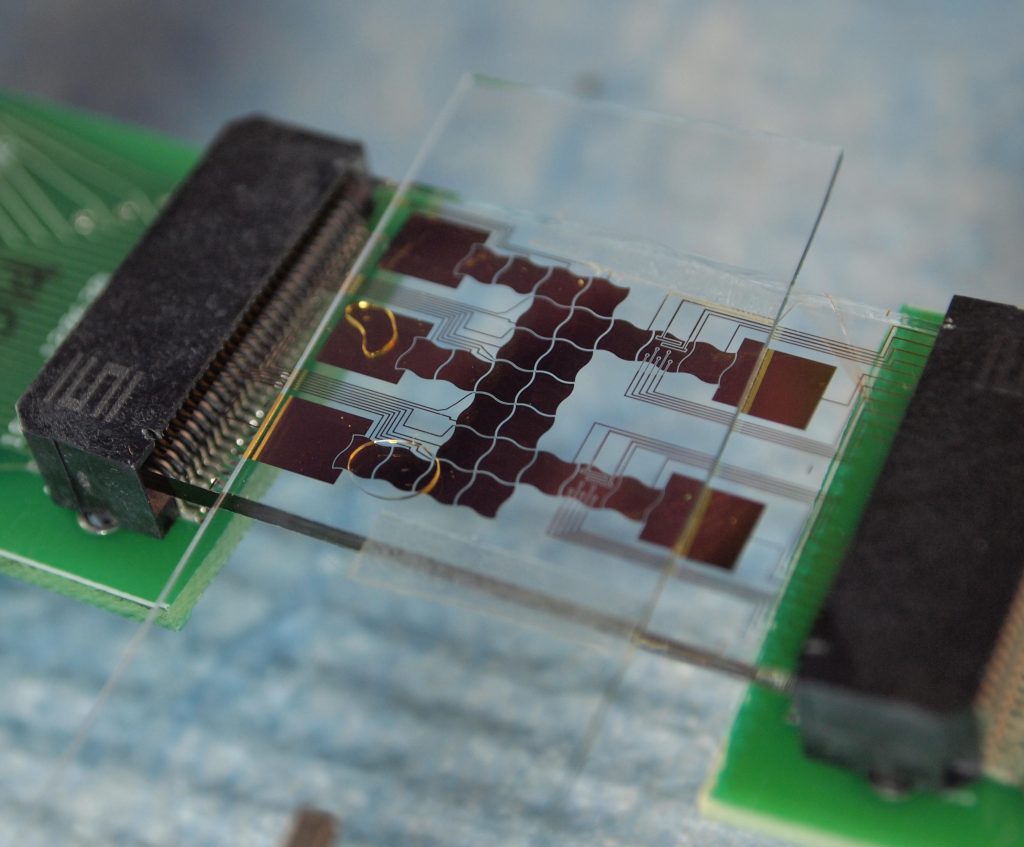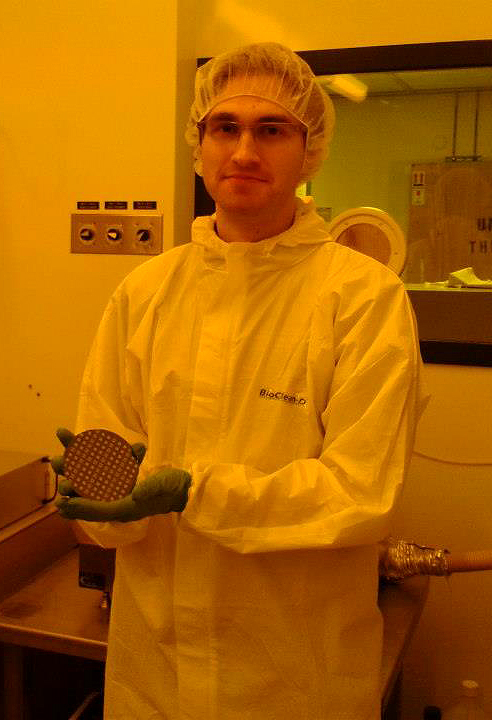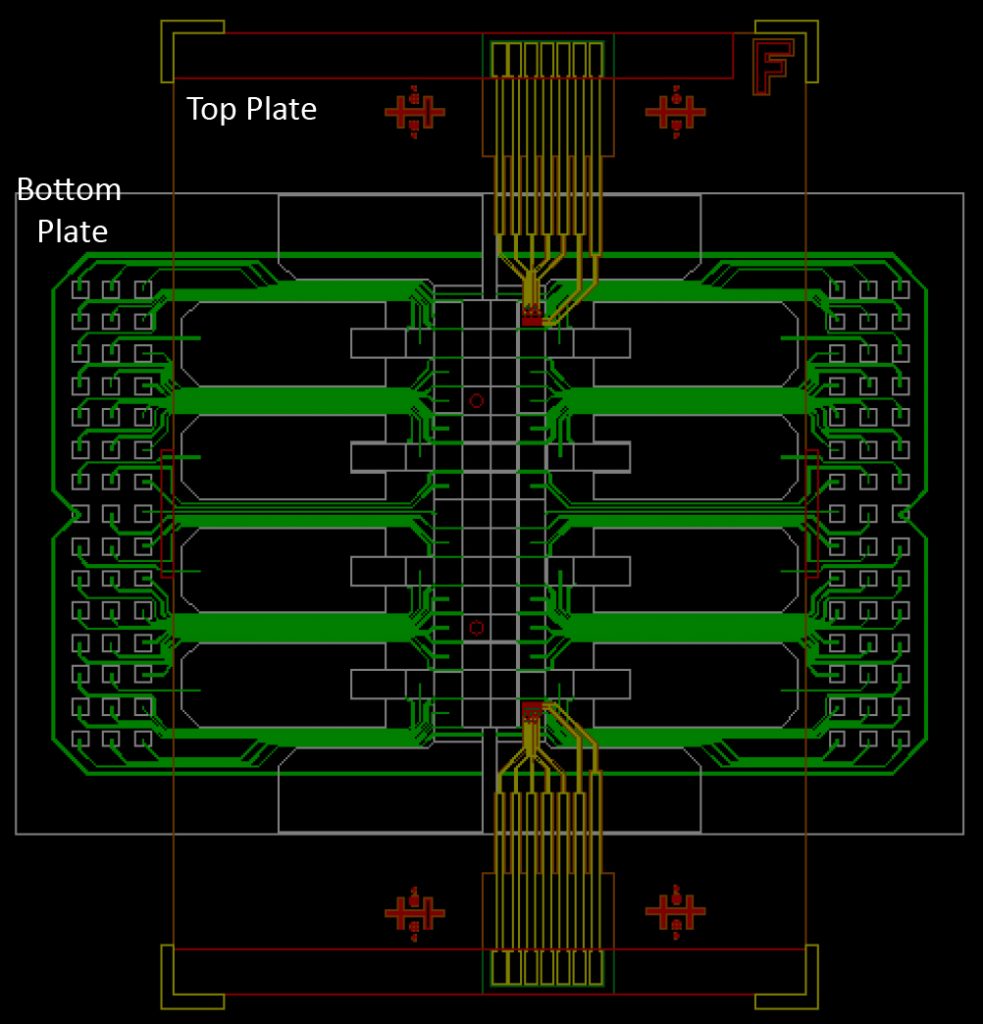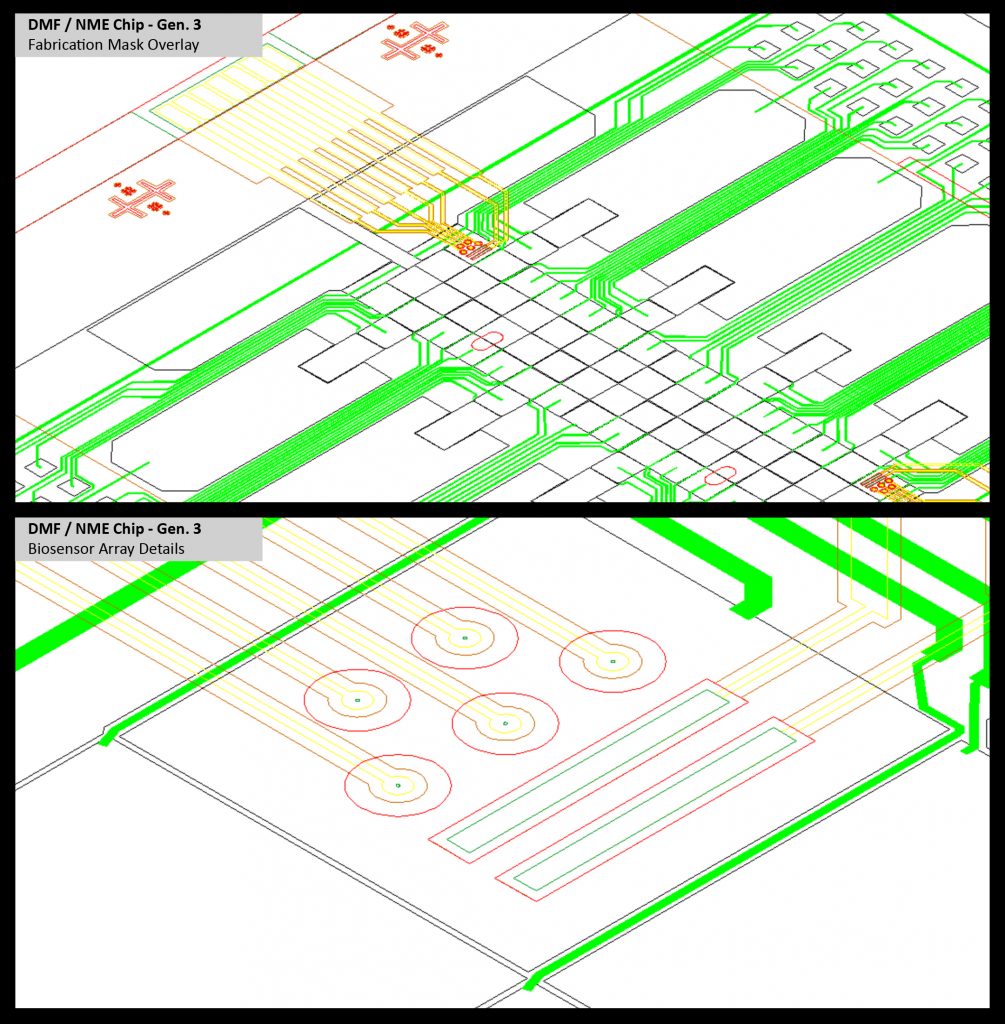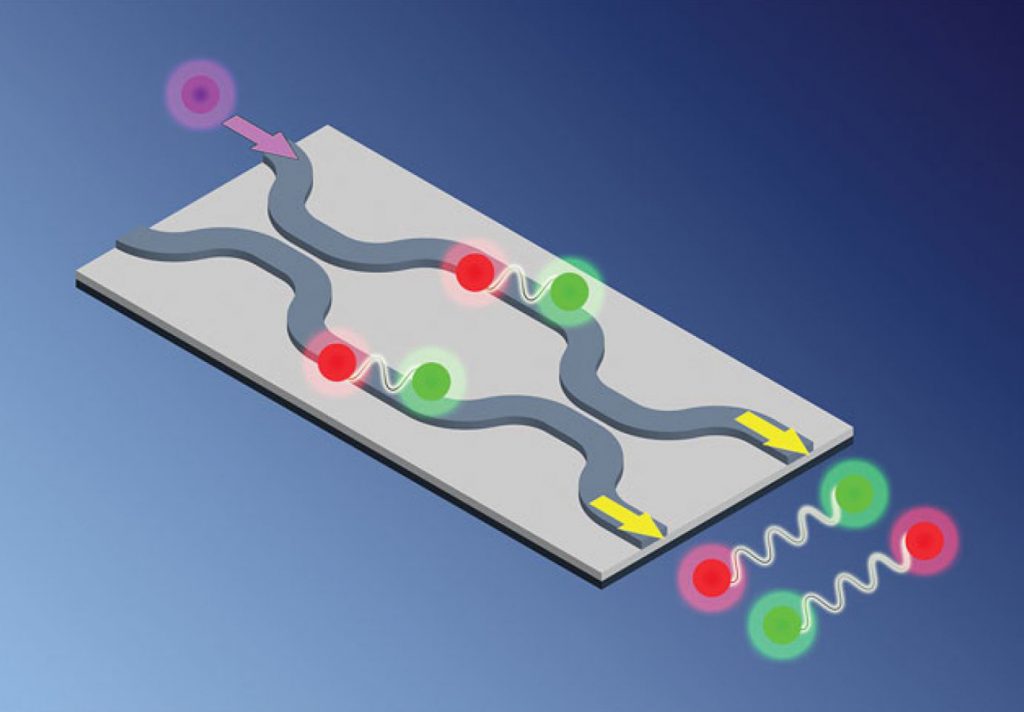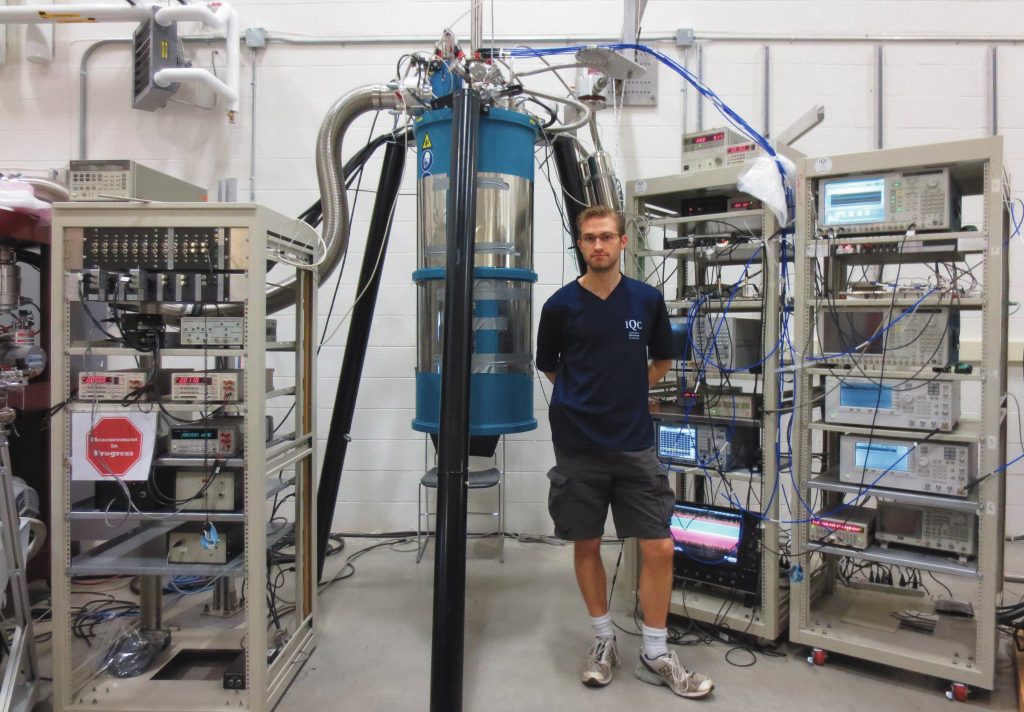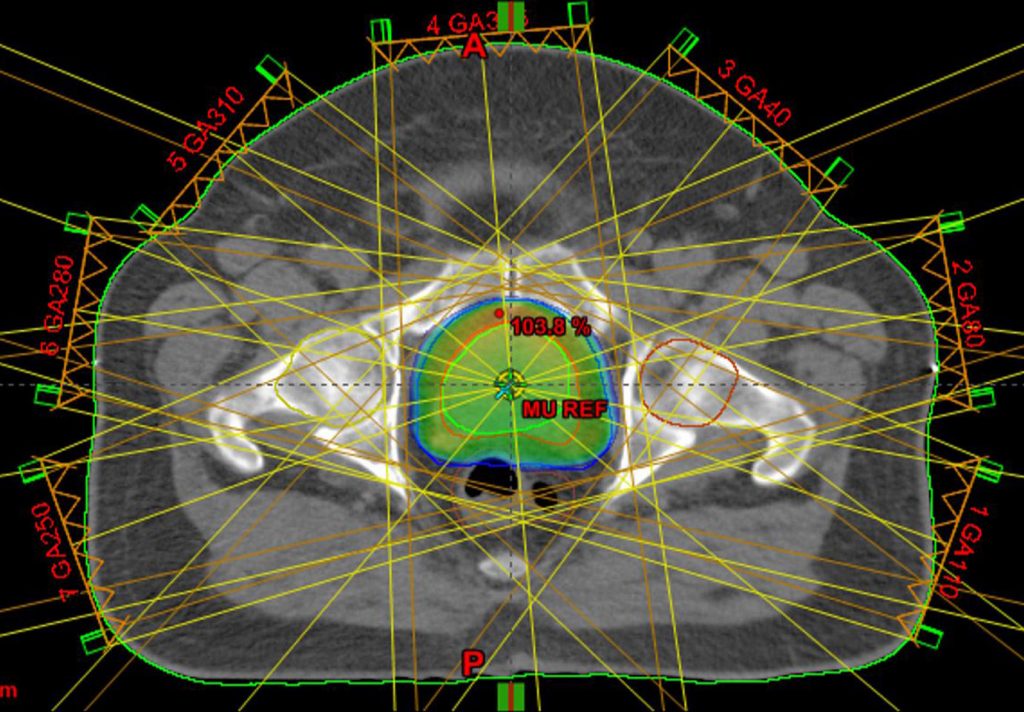Some of the chip designs are shown below:
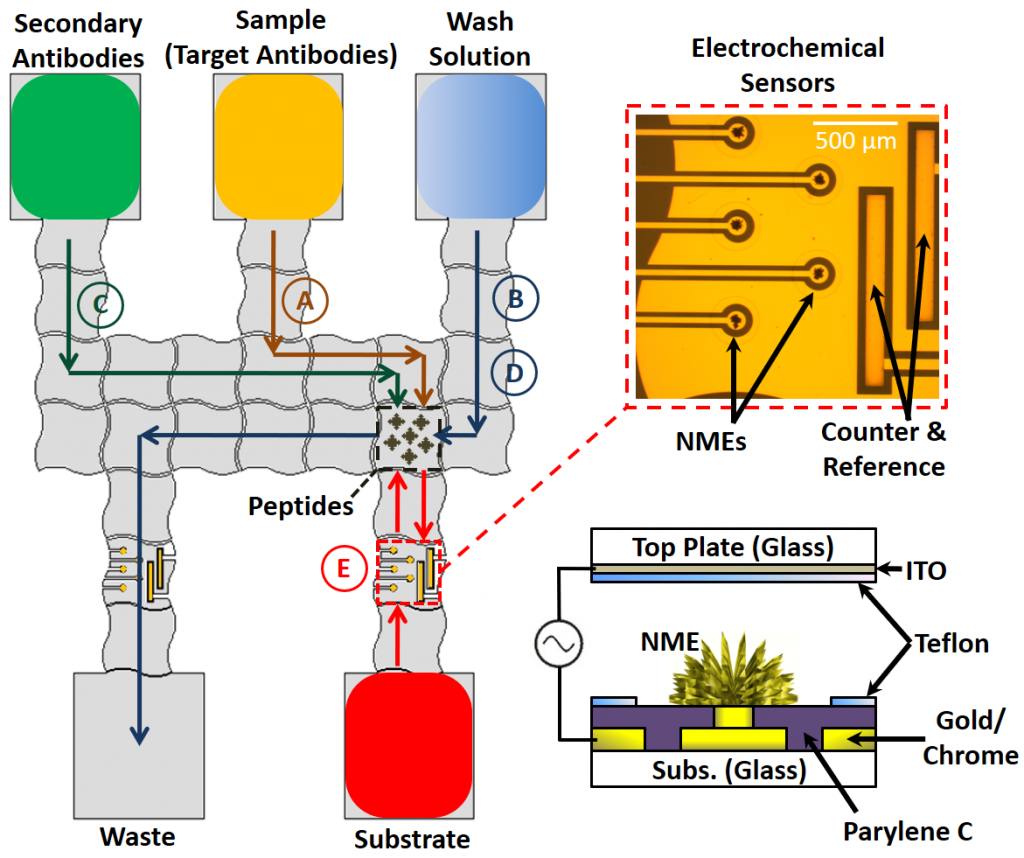
My 2nd-gen chip design and test workflow.
Outcomes
These efforts helped lay the foundations for DMF-automated, ultra-sensitive clinical biosensing on a chip with nanostructured micro-electrodes. Several of the improvements I developed, such as separating the DMF and biosensing electrodes onto two different plates, were employed by the final device architecture published here.
Our early results were presented at the International Conference on Analytical Sciences and Spectroscopy 2013. [Darius G. Rackus, Alexandre Zaragoza, Alya Bhimji, Ryan Marchildon, Michael D. M. Dryden, Mahla Poudineh, Mohtashim Shamsi, Shana O. Kelley, and Aaron Wheeler, “Towards Automated Electrochemical ELISA on a Chip”, 59th International Conference on Analytical Sciences and Spectroscopy, (June 28, 2013).]
Check out some of my other past projects!
I’ve worked on technical projects in a variety of fields. Here are some highlights:

